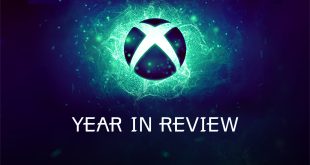Techland debuted Dying Light 2 during this year’s E3, bringing on board narrative designer Chris Avellone, known for his work on RPGs like Knights of the Old Republic II, Fallout: New Vegas and Divinity: Original Sin II. His talents, alongside former CD Projekt Red writer Karolina Stachyra, are intended to bring player choice to the forefront, with a focus on player actions rather than quest-triggered changes to the open world.
Chief Creative Officer Adrian Ciszewski took to an interview with GamesIndustry.biz to explain Dying Light 2’s new direction with its open world and the “hundreds of choices” Avellone describes during E3’s gameplay premiere. The team has been committed to “choices and consequences as a gameplay” and “a narrative sandbox” rather than simply “picking a dialogue choice in a cutscene and branching the story” like traditional RPGs.
“We didn't count the number of choices we can do, because it's really systemic,” Ciszewski explains. “For example, the Peacekeepers faction – they're clearing the streets of baddies, but they're also clearing the dark zones and the streets from infected. That's a system.”
“If you tell the Peacekeepers about a building [full of zombies], the zombies will move from that location into another one, but that will create other problems because there will be more zombies in that other part of the city. If the Peacekeepers clear part of the dark zone, it will push the zombies to find another place to hide.”
This is just one example to showcase that every single faction has its own unique rules and triggers that the player can manipulate if they learn what it is, but it’s much more than just dialogue choice A instead of B to incite a consequence such as relocation. Relocation is highly important as each faction works towards its goal, but it can also be used to shift how populated zombies are in one specific area. If a settlement moves to an area dense with zombies, “there won't be as many zombies so the difficulty level will drop.”
Of course, the inverse can be true as well, with zombies flooding into the area that has since been vacated. This does, however, give players the opportunity to infiltrate faction-owned buildings with less of a chance of that faction discovering and punishing your actions. This is all part of a “huge matrix” that sits behind the scenes.
“We think that choices and consequences, and the lore we've created for this world, it's all something that could be a surprise for people that didn't like the first game,” Ciszewski concludes. “It's more about humans and the relations between factions, so it's not just for the zombie fans.”
KitGuru Says: Techland has already proven is technical chops with the first Dying Light, encouraging faith despite its large ambitions. Admittedly, trying to skip dialogue at times on a second play through of various RPGs has definitely caused some unwanted consequences, so I’m wondering just how well I’d fare with Dying Light 2’s systems if the motion sickness doesn’t hit me first.
 KitGuru KitGuru.net – Tech News | Hardware News | Hardware Reviews | IOS | Mobile | Gaming | Graphics Cards
KitGuru KitGuru.net – Tech News | Hardware News | Hardware Reviews | IOS | Mobile | Gaming | Graphics Cards


